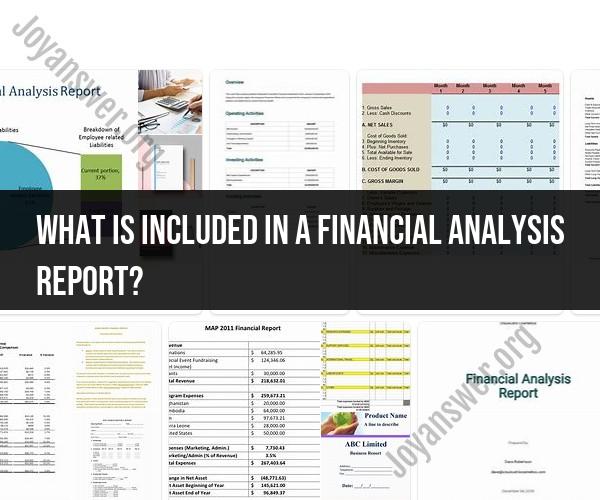What is included in a financial analysis report?
A comprehensive financial analysis report typically includes various components that provide a detailed overview of a company's financial health and performance. Here are the key components typically found in such a report:
Executive Summary: This section provides a concise overview of the entire report, summarizing key findings, financial highlights, and conclusions. It's often the first section and should capture the reader's attention.
The introduction sets the stage for the analysis, outlining the purpose of the report, the company or industry being analyzed, and any relevant context.
Company Overview: This section provides background information about the company, including its history, mission, products or services, and market presence.
Financial Statements: The core of the analysis involves an in-depth examination of the company's financial statements, including:
- Income Statement: A review of revenue, expenses, and profitability over a specific period.
- Balance Sheet: An analysis of assets, liabilities, and equity at a particular point in time.
- Cash Flow Statement: An evaluation of cash inflows and outflows from operating, investing, and financing activities.
Financial Ratios: This section includes calculations of various financial ratios, such as:
- Liquidity Ratios: Assessing the company's ability to meet short-term obligations.
- Profitability Ratios: Analyzing the company's overall profitability.
- Solvency Ratios: Evaluating the company's long-term financial stability.
- Efficiency Ratios: Assessing how efficiently the company utilizes its assets.
Trend Analysis: A comparison of financial data over multiple periods (usually several years) to identify trends and patterns in performance.
Competitive Analysis: Comparing the company's financial performance with that of its competitors or industry benchmarks to assess relative strengths and weaknesses.
SWOT Analysis: A discussion of the company's strengths, weaknesses, opportunities, and threats, considering both internal and external factors.
Risk Assessment: Identifying and evaluating key financial risks that could impact the company's future performance.
Recommendations: Based on the analysis, providing recommendations for potential areas of improvement or strategic actions the company should consider.
Conclusion: Summarizing the main findings of the analysis and reiterating key takeaways.
Appendices: Any additional information, data, or supporting documents, such as detailed calculations, charts, or graphs, may be included in the appendices.
It's important to note that the content and structure of a financial analysis report may vary depending on the purpose of the analysis, the audience, and the industry in which the company operates. The report should be clear, well-organized, and supported by data to provide a comprehensive view of the company's financial performance.













